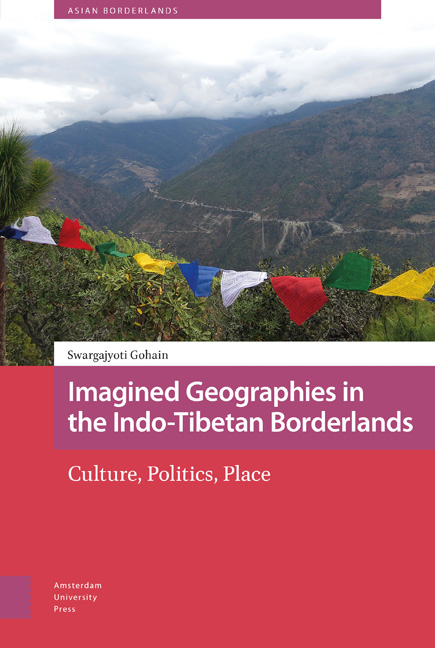Introduction: Imagined Places
Published online by Cambridge University Press: 25 November 2020
Summary
In summer 2008, when I was conducting preliminary fieldwork in Tawang in Northeast India, I heard vague murmurings of a movement for local autonomy that was brewing among a section of the population – news of which had not yet made it to the mainstream national media. I saw posters heralding a ‘Mon Autonomous Region in Arunachal Pradesh under the Sixth Schedule’ pasted on the doors and walls of offices and residences, as well as market spaces. People told me that if I wanted to know more about the autonomy movement, I should meet the brain behind the concept: Tsona Gontse Rinpoche, head of Gaden Rabgye Ling (GRL) monastery – an influential spiritual leader as well as elected political representative. In fact, many Monpa people in Tawang referred to the demand for autonomy as ‘Rinpoche's movement’. In 2003, he had formed an organization called the Mon Autonomous Region Demand Committee (MARDC) and mobilized a section of Monpas to demand autonomy according to the Sixth Schedule of the Indian constitution, which provides for local governance among marginalized minorities. Learning that Rinpoche was giving a public talk a few days later at the Kalachakra monastery in the nearby town of Dirang, I decided to make an unscheduled trip to see him.
The downhill journey from Tawang to Dirang, impeded by bumpy dust-tracks and abrupt S-turns, took around six hours; by the time I reached the monastery grounds, T.G. Rinpoche (as he was popularly known) was in the middle of his speech. He wore the yellow robes of the Gelug Buddhist order and was seated on a raised dais decked with silk streamers of yellow, green, red, blue, and white – the five Buddhist colours – surrounded by his monk attendees. An audience of around 200 people squatted on the grass, men and women with kids in their arms, carrying bags and hampers of food on which they would lunch, picnic-style, after the wang (‘empowerment ceremony’; Tibetan Wylie transliteration: dbang) that was to follow. They listened intently to Rinpoche, some with their hands folded in veneration, as he spoke with impassioned gestures about the need to preserve the culture of the Monpas. Addressing the gathering, ironically, in Hindi, T.G. Rinpoche bemoaned the Monpas’ use of Hindi – a language that is not their own – saying, ‘Hamein [apne aap ko] Monpa kehne mein sharam aata hain’ [We have forgotten how to be proud of being a Monpa].
- Type
- Chapter
- Information
- Imagined Geographies in the Indo-Tibetan BorderlandsCulture, Politics, Place, pp. 13 - 44Publisher: Amsterdam University PressPrint publication year: 2020



